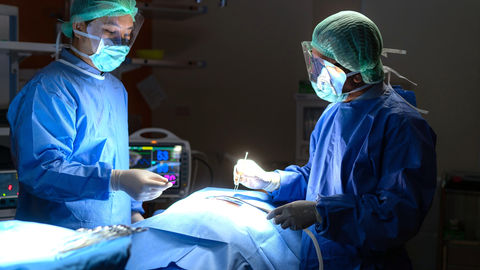
A caesarean section is a great strain on the body. Many pregnant women are particularly put off by the pain. The gentle caesarean section is gentler and prevents deep pain because only the upper layers of the skin are incised.
In the conventional procedure, the pregnant woman’s abdomen is opened with a scalpel in order to remove the child directly from the uterus. The caesarean section is painless for the mother because the operation is performed under local anesthesia. The advantage is that you remain conscious during the birth and only feel slight tension and pressure. After the procedure, however, you may experience long-lasting pain from the wound, which often necessitates a somewhat longer stay in hospital.
Wound pain after childbirth
In a traditional caesarean section, the doctor uses a local anesthetic to carefully open the abdominal wall with a horizontal incision to lift the baby out of the uterus. After a few minutes it’s all over and you can finally hold your child in your arms. The operation itself is completely painless. However, when the anesthetic wears off, severe pain can occur, since the caesarean section also cuts through deeper layers (fatty tissue, peritoneum, bladder and nerves).
A gentler alternative: the gentle caesarean section
Many women therefore opt for a somewhat gentler method. With the Misgav-Ladach technique, which is behind the “gentle” caesarean section, the abdominal wall and uterus must also be cut open with a scalpel. All other layers are only torn open. The “tearing” means that nerves and vessels are stretched but not severed. The typical wound pain caused by cutting nerves can be prevented in this way. However, the gentle caesarean section is not always possible: it cannot be used on women who have already had abdominal surgery with an abdominal incision: the tissue here is scarred from earlier healing, and these areas could lead to complications during the gentle caesarean section.